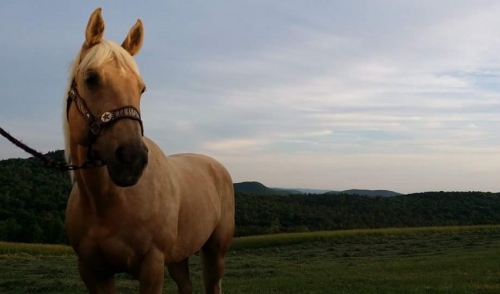{article.name}
How to Tack Your Horse Properly

- Share this:
- Share on Facebook
- Pin on Pinterest
- Tweet on Twitter
Getting your horse ready to ride can be a challenge if you don’t know the tips and tricks to make it easier. Movies and people who have been doing it for a long time make it seem easy as if throwing on a saddle is all it takes. The truth is, applying the tack or equipment used for riding a horse can be harder than it looks. Therefore, follow these tips on how to apply tack on your horse so that your next ride is both safe and enjoyable.
The first tip to applying tack on your horse is to always double check your equipment. Always take some time to look over your equipment before and while you’re putting it on your horse to make sure nothing is too worn or cracked. Dry leather has a tendency to break when sudden pressure is put against it. You don’t want this to happen while riding as it could lead to serious damage to both you and your horse. Once you have made sure equipment is ok, before saddling your horse, make sure your horse is also in good, clean shape. Groom your horse to remove any dirt and debris from its skin that may cause irritation under the saddle and to check for bumps or swelling. You should also clean underneath the belly where the cinches go as something caught under the cinch can really cause your horse to act up.
Whether you are a bridle first or saddle first type of person it doesn’t really matter, it’s all about personal preference. Just make sure to tie your horse’s head-collar so that it is around its neck if you are opting to go bridle first. This will make it 10 times easier to bridle. If you are doing the saddle first, leave the bridle on his face so the horse can’t get away from you. When throwing the saddle on your horse, do so gently as to not injure the horse’s back. The saddle should always sit in the middle of the saddle pad and should not interfere with the horse’s shoulder. One trick to know if your saddle is sitting correctly is if there’s a thin strip of the saddle pad that’s coming out from directly underneath the pommel. After your saddle is situated, you want to lift both the saddle and blanket or pad over the withers. One tip to always remember after saddling your horse to make sure there is a 3-4 inch space between the bottom of the blanket and your horse’s withers. This will prevent the blanket and saddle from binding or pinching your horse.
If your horse tends to bloat, tighten the cinch or girth gradually prior to mounting. Be patient and tighten when the horse exhales as you move him a few steps forward or backwards. If you have to add boots or polo’s, make sure to always strap your horse beginning from the inside of the horse’s leg to the front so that the strap itself is facing backwards on the outside of the horse’s leg. When finishing up, put the reins over the horse’s head so they don’t get tangled up in all the other straps of the bridle if not already applied. This helps you maintain control over the horse. Never tie a horse by the reins as the horse can set back and break them if tied in a tight fashion. The last tip is to never leave a halter on a horse that is turned out. It may seem like the easy way to go about it, but this poses a big safety risk as the halter can easy get caught on a fence post or even the horse’s heel if scratching its head.
The process of applying tack to your horse will surely get easier over time. Follow these tips for guidance so that you can mount your horse, ride safely, and have fun.
Special Offers
We are constantly adding new specials to our site. Be sure to check back often!


Comments